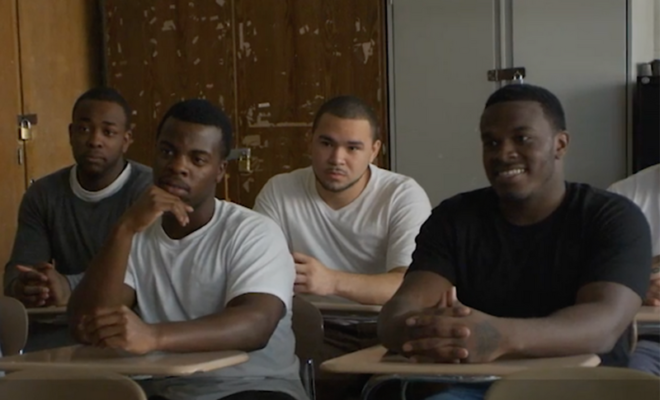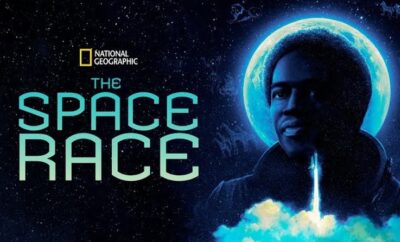
Movie Reviews
John Leguizamo Live at Rikers
By: Jennifer Vintzileos
In life a second chance is a gift. And for those in the Getting Out and Staying Out program at Rikers, that opportunity came with an unexpected treat: having John Leguizamo not only perform for them but sitting down to speak with them. Directed by Elena Engel, the documentary John Leguizamo Live At Rikers has the comedian sharing his story with inmates at the Rikers Island Correctional Facility in New York. And while jokes are told and laughs are plentiful, Leguizamo gets personal with the inmates on how if he had not had the luck of being pushed towards a career in acting he may have been sitting amongst those incarcerated.
Coming off a Broadway run of his show “Ghetto Klown,” John Leguizamo was asked to perform for the inmates at Rikers Island. Telling the story he knows best, Leguizamo delves into his childhood and recalls growing up in Jackson Heights, New York. He shares how after one arrest he managed to pull his life together…thanks in part to a Math teacher that gave him the name of acting coach Sylvia Lee Myrtle. Finding his home in acting, Leguizamo had an innate need to prove to his father that a career in entertainment could be lucrative and began to build his Hollywood legacy from the ground up. But aside from the show that the inmates are treated to, Leguizamo also gets to sit down with the incarcerated that are enrolled in the Getting Out and Staying Out program. This program focuses on locked up individuals who want to avoid becoming chronic offenders by offering education, employment and emotional wellbeing while promoting nonviolence. And while Leguizamo can spin his life story with a humorous tone, the reality of these inmates remains a constant once the curtain falls.
Director Engel has the nuanced touch that places John Leguizamo in an authentic and honest spotlight in John Leguizamo Live At Rikers. Through humor, humility and humbleness the stories of the inmates who sit down with him paint a more hopeful picture. While there are quite a few who will be back through the system as repeat offenders, those in this special program have a higher rate of success once they leave…roughly eighty-six percent. They are criminals in the eyes of the law, but when Leguizamo sits down with them the parallels in stories are drawn quite clear – they want to be architects, psychologists, firefighters…all they need is one chance to prove themselves.
What truly resonated with me is how Leguizamo was able to share himself on the level of the inmates and give them a space to be their honest, authentic selves. Each one had a story to tell that sometimes paralleled the same path Leguizamo found himself on during his own tumultuous childhood in Jackson Heights. And, he notes if it weren’t for at least one person believing in him that Leguizamo may not have had that push towards acting. The conversations stripped away the bars and showed that even in incarceration, all these inmates hope for is a future once they’re outside of the system.
At the end of the film the inmates are sent back to their cells to continue finishing out their sentences. Viewers are left with the feeling that they really do need that second chance at life. We see that not every childhood or upbringing is anywhere close to ideal and that not everyone is inherently bad but rather dealt a bad hand or unfortunate opportunity. It also shows that, possibly, those at Rikers can learn their lesson the first time around.
For more information on Getting Out and Staying Out and how you can get involved, please visit https://www.gosonyc.org.




You must be logged in to post a comment Login